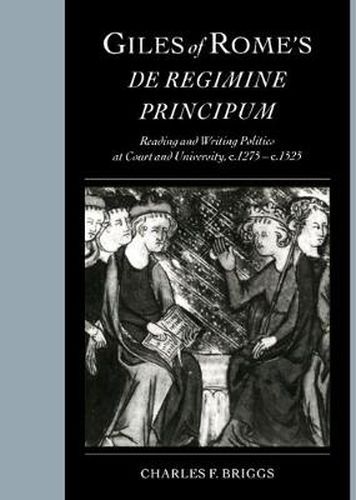Readings Newsletter
Become a Readings Member to make your shopping experience even easier.
Sign in or sign up for free!
You’re not far away from qualifying for FREE standard shipping within Australia
You’ve qualified for FREE standard shipping within Australia
The cart is loading…






From the time of its composition (c.1280) for Philip the Fair of France until the early sixteenth century, Giles of Rome’s mirror of princes, the De regimine principum, was read by both lay and clerical readers in the original Latin and in several vernacular translations, and served as model or source for several works of princely advice. This study examines the relationship between this didactic political text and its audience by focusing on the textual and material aspects of the surviving manuscript copies, as well as on the evidence of ownership and use found in them and in documentary and literary sources. Briggs argues that lay readers used De regimine for several purposes, including as an educational treatise and military manual, whereas clerics, who often first came into contact with it at university, glossed, constructed apparatus for, and modified the text to suit their needs in their later professional lives.
$9.00 standard shipping within Australia
FREE standard shipping within Australia for orders over $100.00
Express & International shipping calculated at checkout
From the time of its composition (c.1280) for Philip the Fair of France until the early sixteenth century, Giles of Rome’s mirror of princes, the De regimine principum, was read by both lay and clerical readers in the original Latin and in several vernacular translations, and served as model or source for several works of princely advice. This study examines the relationship between this didactic political text and its audience by focusing on the textual and material aspects of the surviving manuscript copies, as well as on the evidence of ownership and use found in them and in documentary and literary sources. Briggs argues that lay readers used De regimine for several purposes, including as an educational treatise and military manual, whereas clerics, who often first came into contact with it at university, glossed, constructed apparatus for, and modified the text to suit their needs in their later professional lives.